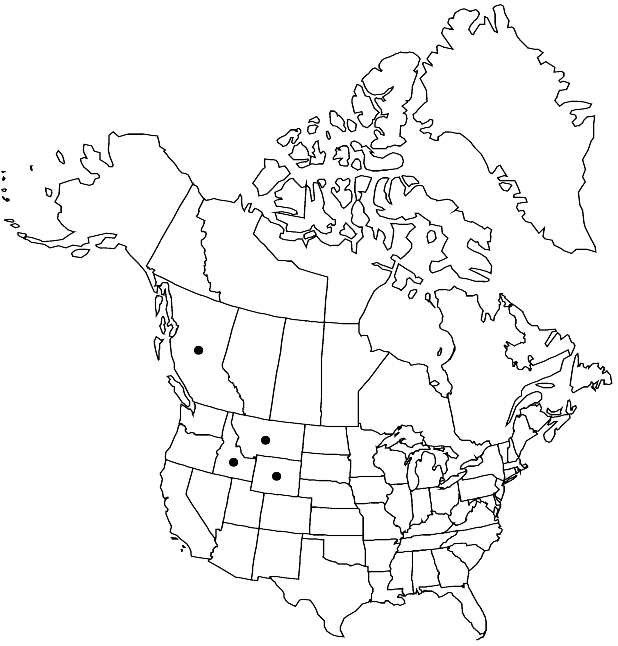Boechera macounii
Harvard Pap. Bot. 11: 267. 2007.
Perennials; usually long-lived; apomictic; caudex often woody. Stems 1 or several per caudex branch, arising from center or margin of rosette near ground surface, 2–3.6 dm, densely pubescent proximally, trichomes simple and short-stalked, 2-rayed, 0.1–0.8 mm, glabrous distally. Basal leaves: blade oblanceolate to linear-oblanceolate, 1–3 (–5) mm wide, margins entire or minutely toothed, ciliate proximally, trichomes (simple), to 0.7 mm, surfaces densely pubescent, trichomes short-stalked, 3–6-rayed, 0.07–0.3 mm. Cauline leaves: (5–) 9–16, often concealing stem proximally; blade auricles 0.5–1.5 mm, surfaces of distalmost leaves glabrous. Racemes 10–33-flowered, usually unbranched. Fruiting pedicels divaricate-ascending to horizontal, straight, 5–13 (–17) mm, usually densely pubescent, rarely glabrous, trichomes appressed, 2-rayed or 3-rayed. Flowers divaricate-ascending at anthesis; sepals pubescent; petals lavender to purple, 4–5 × 0.5–0.8 mm, glabrous; pollen spheroid. Fruits divaricate-ascending to descending, not appressed to rachis, not secund, usually curved, edges parallel, 3.5–6.5 cm × 0.8–1.2 mm; valves glabrous; ovules 56–78 per ovary; style 0.1–0.4 mm. Seeds uniseriate, 1–1.2 × 0.7–1 mm; wing often continuous, 0.05–0.15 mm wide.
Phenology: Flowering May–Jul.
Habitat: Rocky hillsides in open pinewoods
Elevation: 2200-2900 m
Distribution

B.C., Idaho, Mont., Wyo.
Discussion
Morphological evidence suggests that Boechera macounii is an apomictic species that arose through hybridization between B. collinsii and B. microphylla (see M. D. Windham and I. A. Al-Shehbaz 2007 for detailed comparison).
Selected References
None.
Lower Taxa
"elongated" is not a number."thick" is not a number."dm" is not declared as a valid unit of measurement for this property.